The Good
- Reliable flagship performance
- Excellent camera
- Attractive design
- Great battery life
The Bad
- No HDR10 support at launch
- No dual camera system
- Fingerprint magnet
- Pricey
We first met the new HTC U11+ at the tail end of 2017, but the company wasn’t ready to release it into the world until we’d all rung in the new year. So, is it still worth a purchase in spite of the imminent arrival of some of this year’s biggest players?
HTC U11+ Review: Design
The original U11 made a real statement when it hit the market, shrugging off the all-metal build of its predecessor and adopting a blend of aluminium and Gorilla Glass in a similar style to that of its rivals. Plus it came in some seriously funky colours.
The U11+ follows suit, again rocking a lightly textured, rounded metal frame, an expansive pillowed ‘liquid glass’ back, plus more robust dust and water resistance with IP68 certification (up to 1.5 metres of fresh water for up to 30 minutes). The body will be rife with fingerprints from the moment you pick the thing up though, so the bundled cleaning cloth and case come as considered inclusions on HTC’s part. Take the smears away, however, and this thing looks beautiful.
It doesn’t come in quite the same selection of vibrant shades as its namesake but it is available with an eye-catching translucent back and as black rectangles go, this Ceramic Black option we’ve been testing looks rather elegant too.
The Plus isn’t just a tall phone but a fairly chunky one as well, as a result of the larger battery that HTC has squeezed inside, but we’re happy with that trade-off if it means we get a longer-lasting phone. Despite the extra heft it’s rounded form also means that it remains comfortable to clutch.
By jumping on last year’s biggest trend and adopting an elongated display, HTC has had to relocate the fingerprint sensor to the phone’s back. Unlike Sammy’s phones, it’s centrally justified for ambidextrous use and arguably more comfortable than the placement on the vanilla U11 too.
There’s no headphone jack and it’s unlikely to make a return so to try and ease frustration HTC bundles its own £35 USB-C headphones and £10 USB-to-jack adapter in-box. Whether this is considered a convenient workaround will come down to each individual user.
HTC U11+ Review: Screen and media
HTC is known for producing great LCD panels and the 6-inch 18:9 aspect ratio Super LCD6 offering on the U11+ is a strong effort. The 78 percent screen-to-body ratio gives the phone a markedly more cutting-edge look than the classic U11 and the Quad HD+ (2880×1440) resolution ensures it’s great for enjoying media. That said, we’d have liked it to be a tad brighter and it still falls short of the levels of contrast or the viewing angles offered up by Samsung’s latest AMOLEDs.
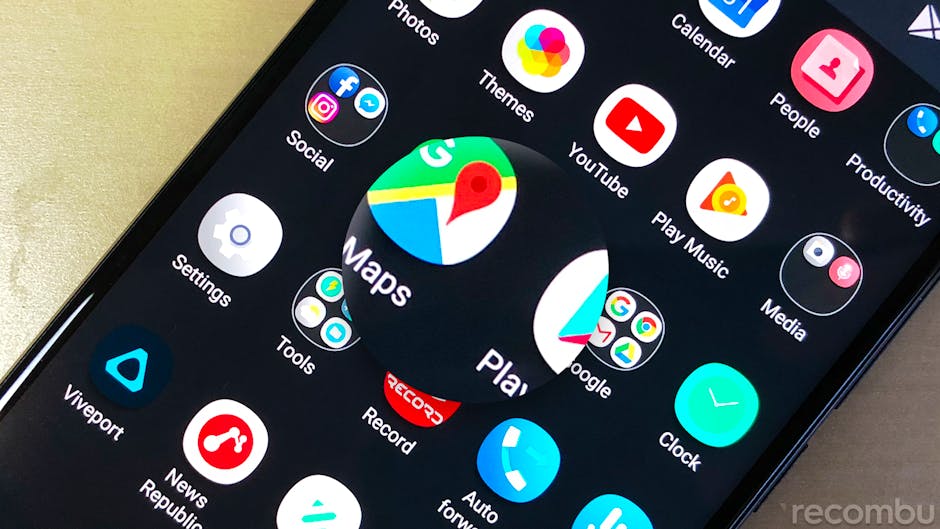
HTC has promised HDR10 support via a pending firmware update, making this the first of the company’s phones able to display HDR content and one of the only LCD-based smartphones to do so as well, it’s just a shame the feature wasn’t implemented by launch time.
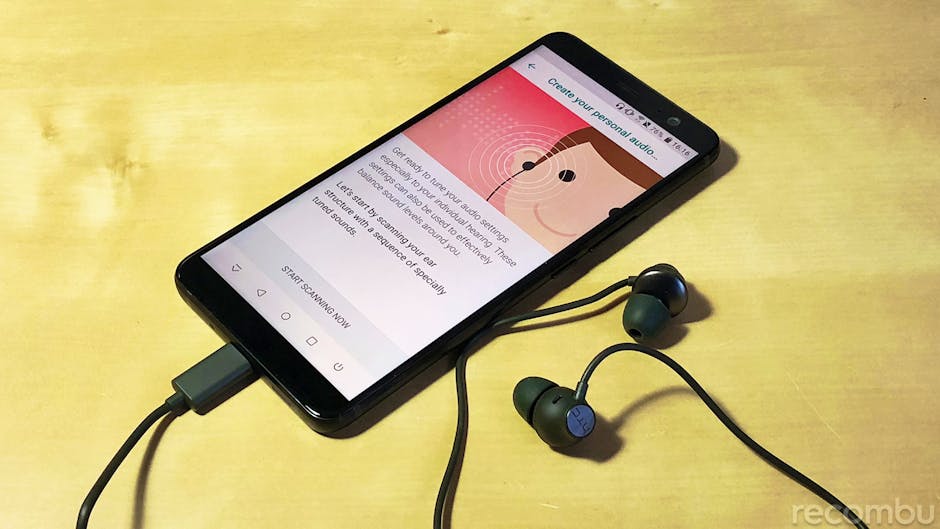
As for the audio experience, the BoomSound dual speaker setup is as ever great, even offering a touch of stereo separation from the speakers. High-Res Audio support and the compatible noise-cancelling USonic headphones, meanwhile, are a good base for enjoying your tunes, especially if you leverage the one-touch audio calibration feature beforehand.
HTC U11+ Review: OS
The highly personalisable HTC Sense experience is almost identical to that of the one found on the standard U11, save for the fact that the Plus benefits from Android 8.0 Oreo out the box. That means Freestyle themes that let you place custom app icons anywhere on your home screens and apps that seem to scale without complaint onto its taller aspect ratio display.
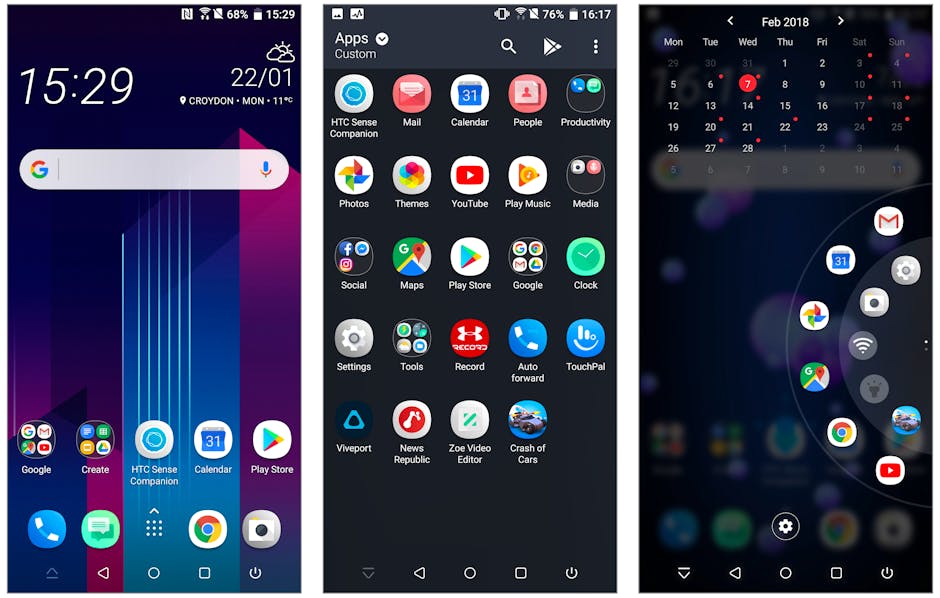
Despite HTC’s reluctance to offer a one-handed mode within its software, there are a few standout inclusions that make navigating and controlling the U11+ with a single mitt a little more palatable. You can swipe down anywhere on your home screen to access notifications and quick settings, customise the navigation bar so that it can be hidden or used to initiate additional functions like screen recording, plus Edge Sense has been upgraded too.
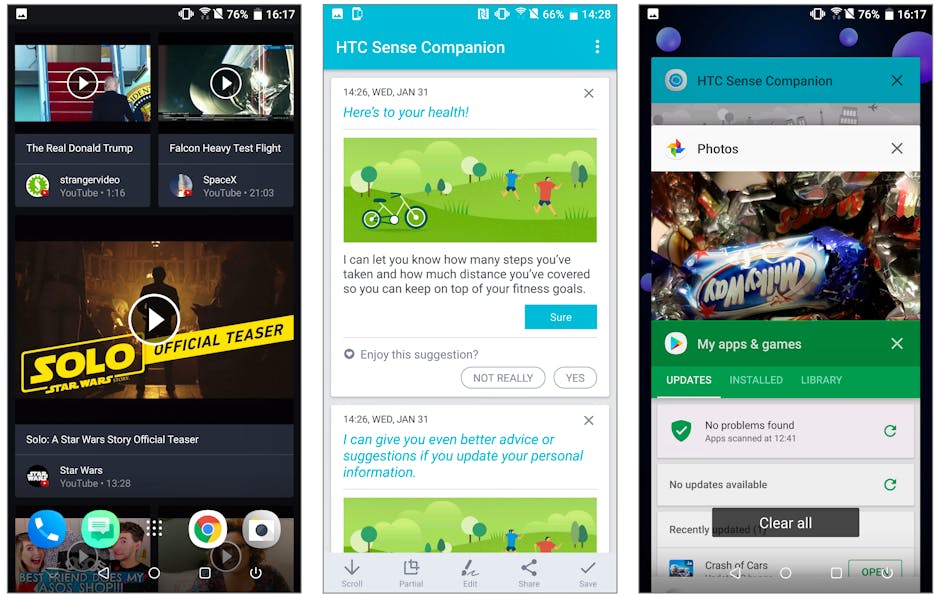
Squeezing the sides of the U11+ pushes you into the camera by default but the experience can be tailored to open any app, open different apps or features depending on the length of the squeeze and the new Edge Launcher is also on hand to allow for quick access to your calendar, as well as any contact or app shortcut that you may want to summon in a jiffy. It’s a powerful addition in the productivity department that serves as a capable alternative to the likes of Samsung’s Edge Screen feature.
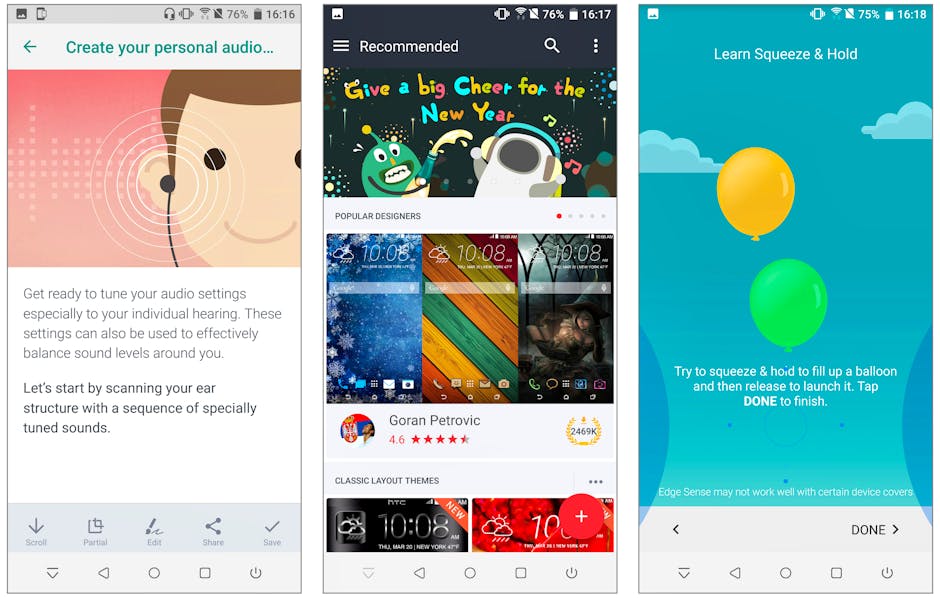
HTC is also continuing its partnership with Amazon by including native Alexa support alongside the Google Assistant, but like HDR10 support, the feature appears to be rolling out to users slowly, which is again, frustrating.
HTC U11+ Review: Performance and battery
The U11+ is one of the first flagships to hit the market this year but its arrival ahead of any real competition right now is partly down to the fact that it’s powered by Qualcomm’s Snapdragon 835; last year’s flagship processor. Whilst the choice of chip in and of itself is no shortcoming, based on word from Qualcomm it’s expected to be replaced by 845-powered smartphones very soon.
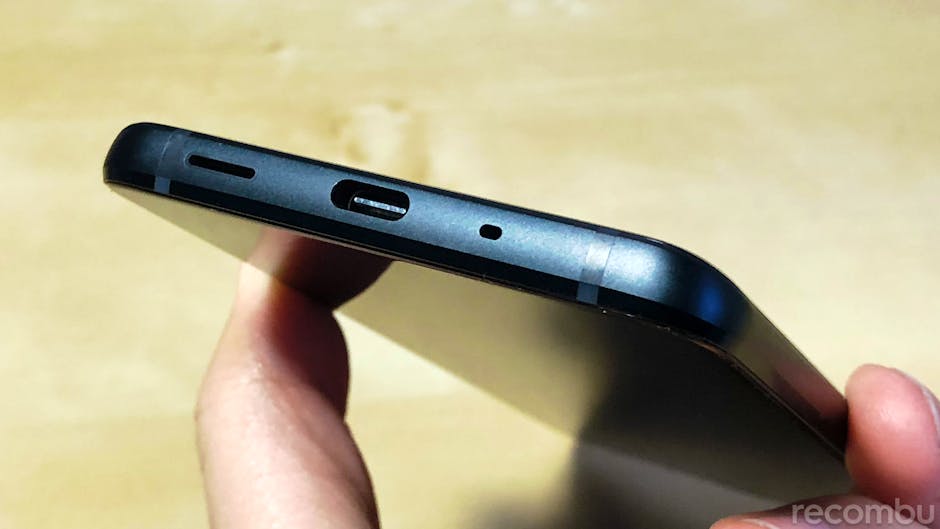
All the same, it’s still top-notch silicon that ensures the U11+ feels as tightly-wound as any current-gen flagship, especially when you consider that there’s also 6GB of RAM on-hand in the UK model (4GB of RAM in other markets).
If storage is a concern the U11+ will make for a great companion. Not only does the UK model squeeze in a whopping 128GB of space, but the hybrid dual SIM tray means you can run the phone on two networks simultaneously or drop in a microSD card to bolster the internal capacity by up to an additional 256GB.
The U11’s so-so battery life was one of its few misgivings and despite having to drive more pixels, the U11+’s more capacious 3930mAh cell is large enough to dole out an improved day and a half of comfortable use at a time. Plus Qualcomm’s Quick Charge 3.0 tech is on-hand to juice the phone back up to full in around an hour and a half. No wireless charging is a mild disappointment but we’re not all that surprised by its absence.
HTC U11+ Review: Cameras
The HTC U11 had one of the best cameras of any 2017 smartphone and the same serious optics have been transposed over to the back of the U11+. HTC hasn’t yet embraced dual rear cameras, so there’s no lossless optical zoom or portrait mode at your disposal, however, basic image quality is excellent all the same.
HTC’s HDR Boost technology helps render high-contrast shooting environments cleanly and accurately, and images generally adopt a more natural appearance than that of notable rivals.
OIS, EIS 1.4µm pixels and an impressively wide f/1.7 aperture all help the 12-megapixel UltraPixel 3 sensor capture some of the best low light smartphone photos out there, with more detail than equivalent shots from both Apple’s and Samsung’s best mobile snappers.
You also get manual control with RAW capture, clean 4K video recording with 3D audio and great stabilisation. Acoustic focus is another interesting feature that drowns out the surrounding sound when you zoom in on a subject whilst shooting. Despite losing half of the megapixels from the standard U11’s front-facer, well-rendered selfies with the option of a countdown timer and one-touch virtual makeup are approachable features too. In essence, the U11+’s cameras are fast, capable and hard to hate.
HTC U11+ Review: Verdict
In a way, the specs and capabilities of the HTC U11+ more closely match what the original U11 should have been. The elongated display falls in line with the trends of 2017, the capacious battery sticks it to phablet-sized rivals like the S8+, Note 8 and Mate 10 Pro, and the cameras and media abilities of the phone are generally top-notch.
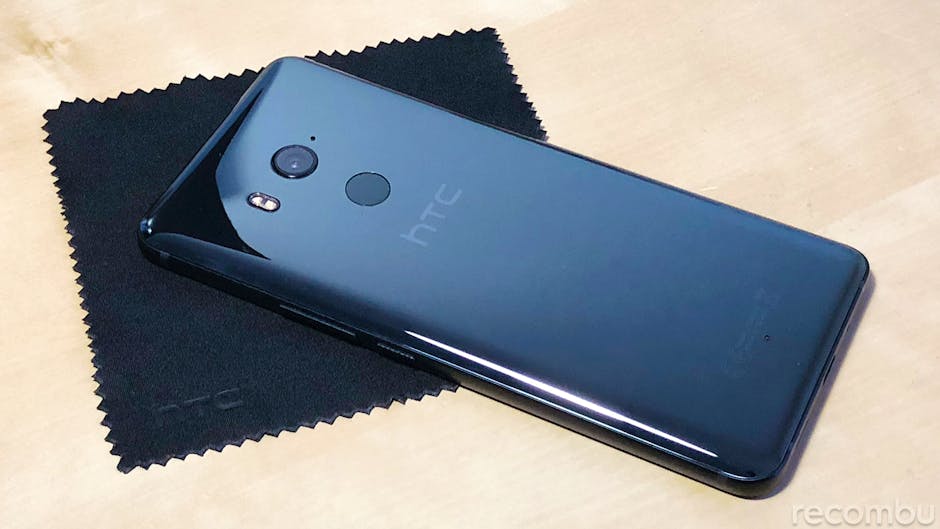
Despite being an improvement on the already excellent U11, the timing of its arrival is less than ideal. The U11+ feels like a phone that should have launched in 2017 and as such, it doesn’t raise the bar high enough to fully counter the incoming wave of next-gen handsets just around the corner.
Read next: HTC U11+ vs OnePlus 5T and iPhone X
Specification
| Screen size | 6-inches |
|---|---|
| Screen resolution | Quad HD+ (2880x1440) |
| Weight | 188 grams |
| OS | Android 8.0 Oreo w/ HTC Sense |
| Rear camera | 12-megapixels |
| Front camera | 8-megapixels |
| Processor | 2.45GHz/1.9GHz octa-core Qualcomm Snapdragon 835 |
| Memory | 4GB/6GB RAM |
| Storage | 64GB/128GB. Expandable via microSD up to 256GB |
| 4G LTE | Yes |
| Bonus features | IP68 certification, dual SIM, acoustic focus |
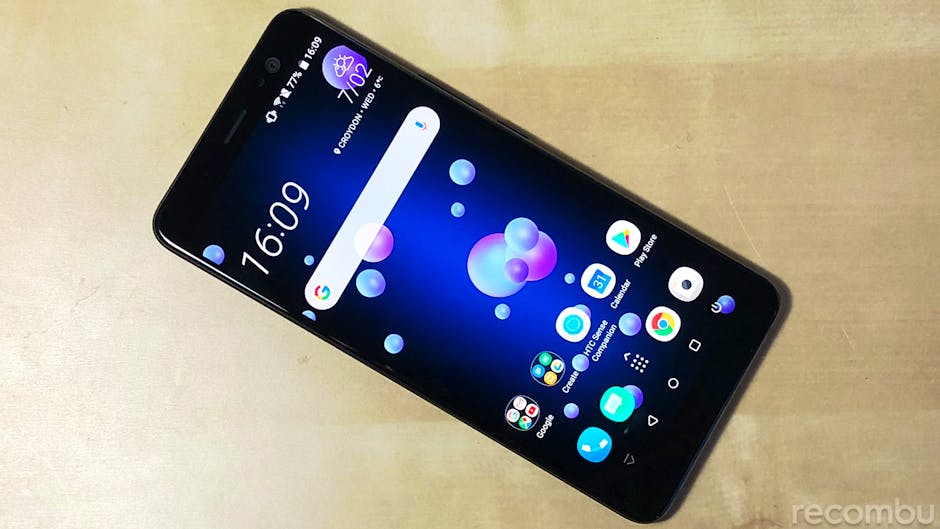
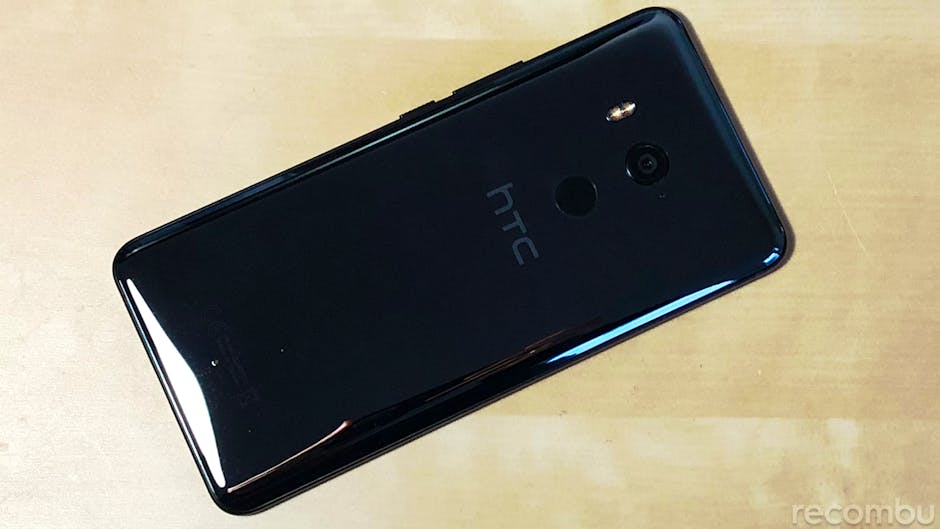
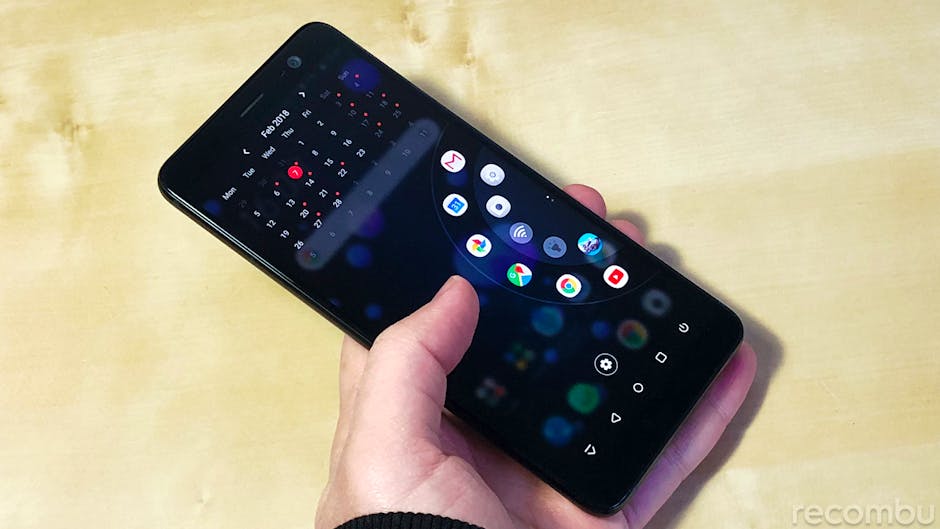
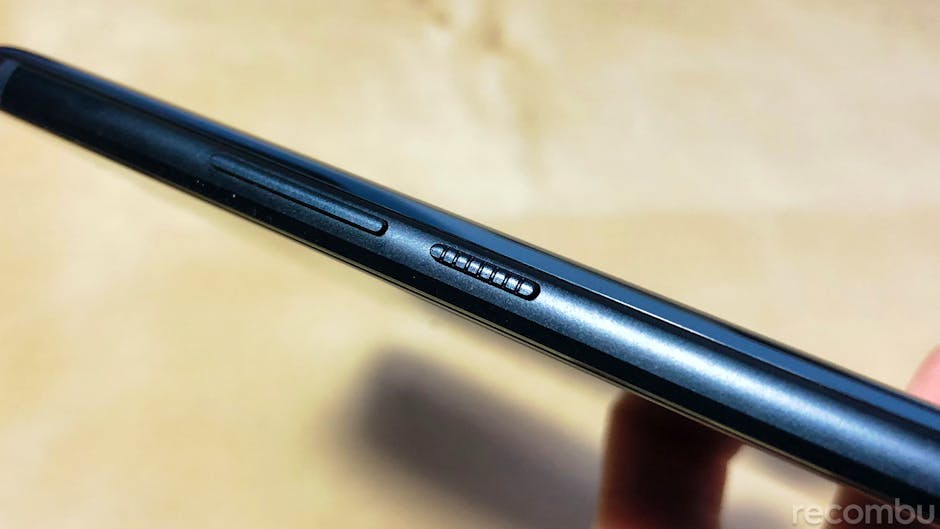
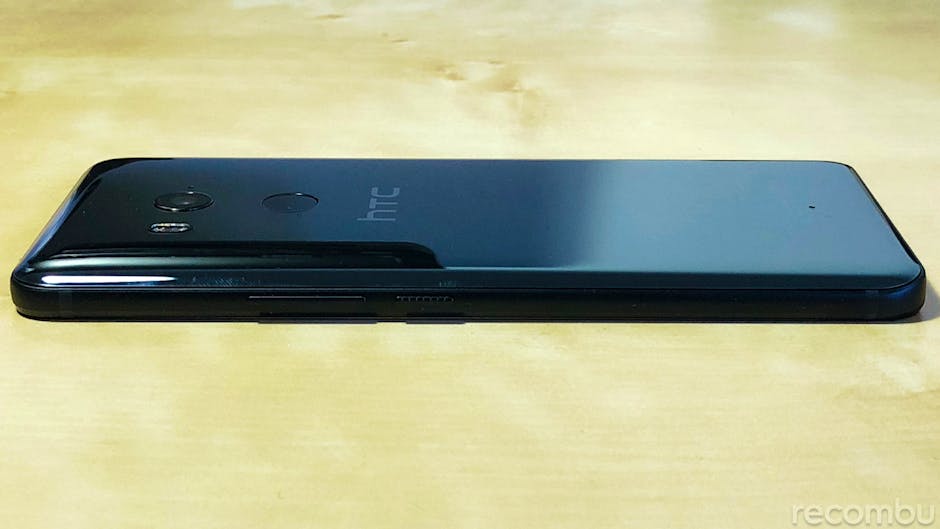
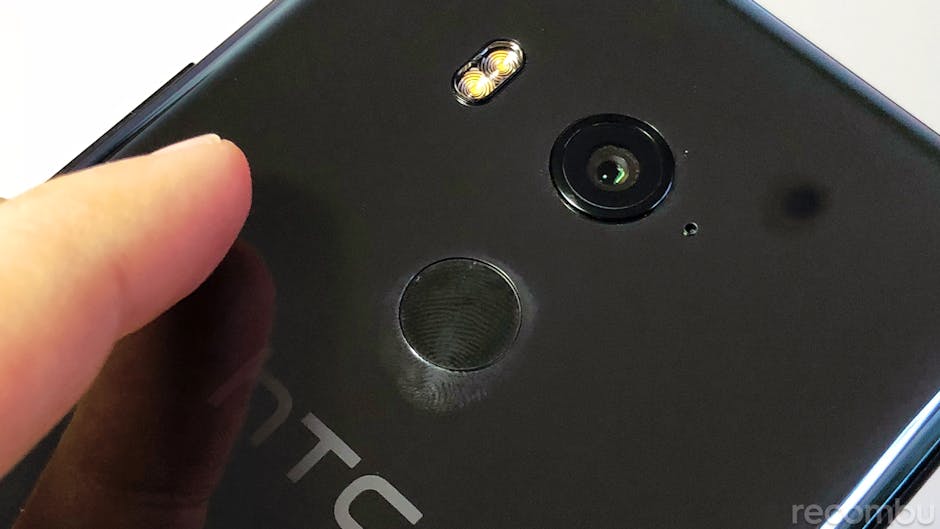






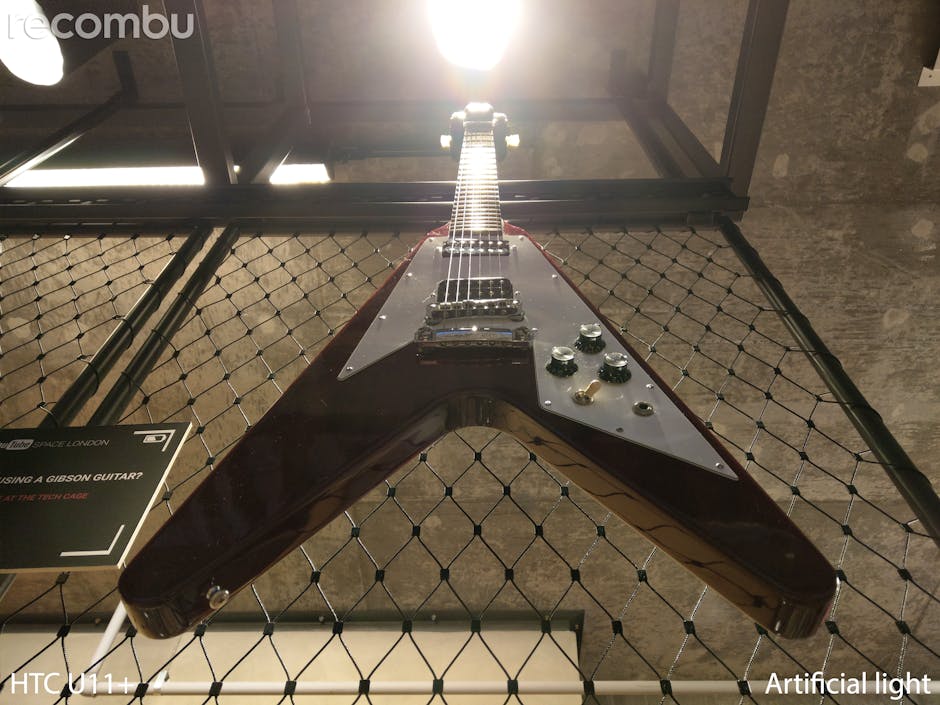





Leave a Reply